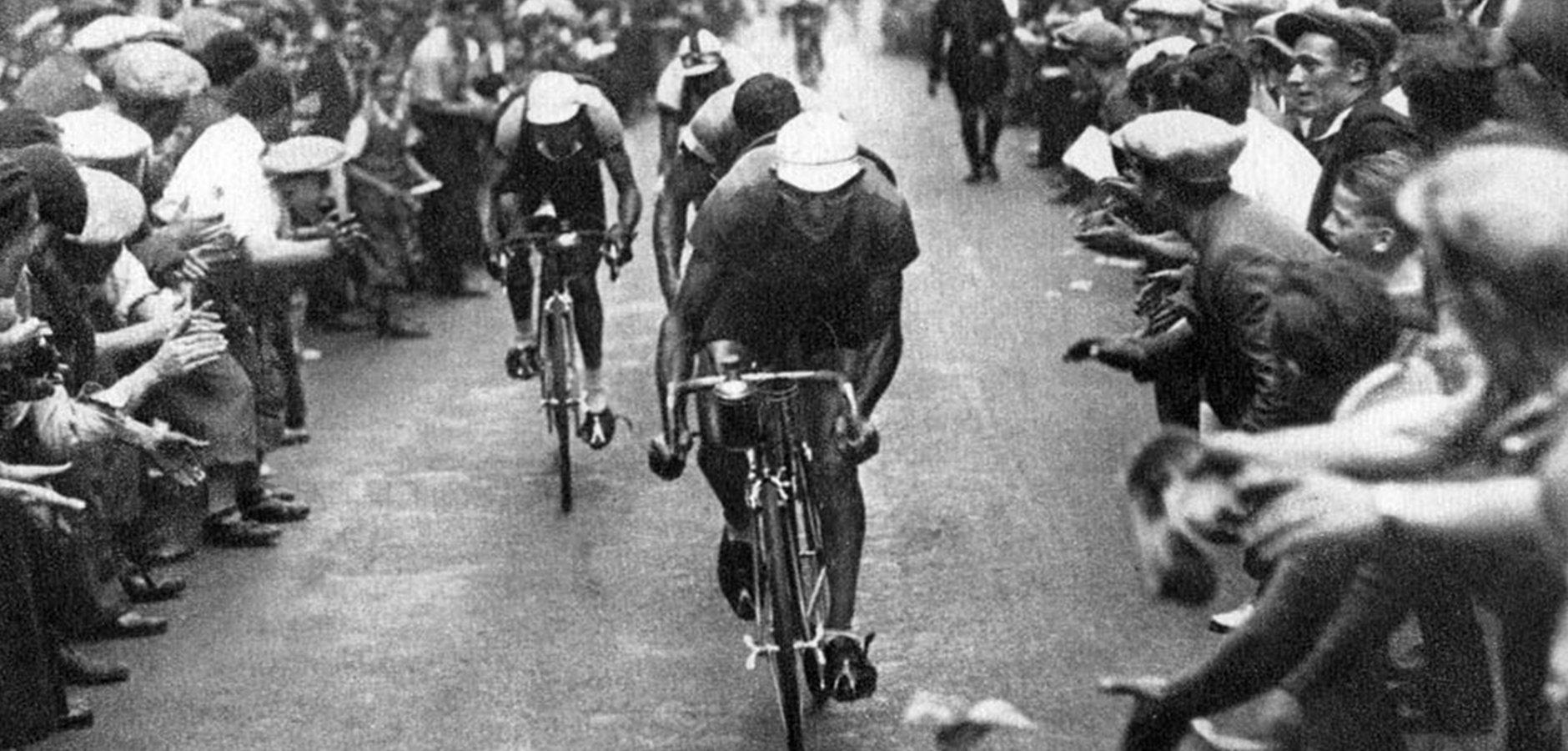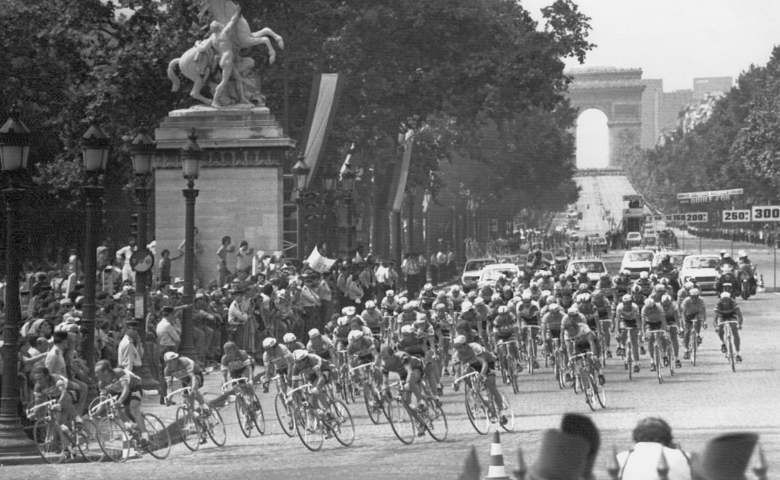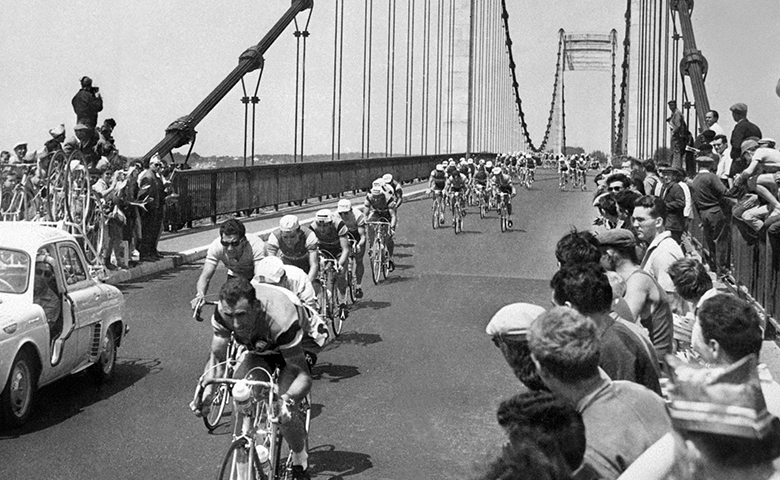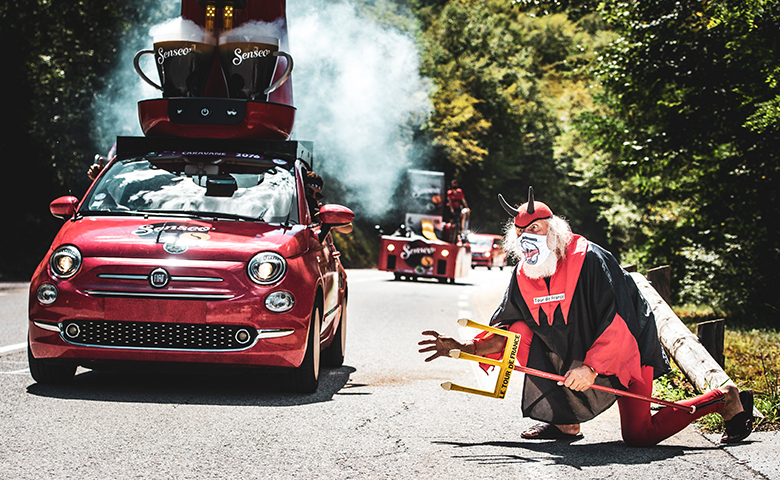
Visit Continental Tires in your country for local vehicle fitment
# Cycling
Tour de France History
The Tour de France: then and now

Le Tour de France has been pushing man and machine to their limits since 1903. But much has changed since the early days of the Tour: from a mostly national attraction, it has become the world’s largest annual multi-day sporting event, drawing billions of fans from across the globe. On the road, too, things are a lot different: safer, more professional and a little less wild. Join us on a ride down memory lane to find out more.
What´s changed? The history of the Tour de France
The first Tour de France was held in 1903 – with the aim of selling more newspapers… It was set up and sponsored by French sports paper L’Auto, which hoped a tough new endurance race around the country would capture the public’s attention and boost its declining sales figures. It was right. The race was a hit, and tens of thousands gathered in Paris to witness its final stage – much like they do today. But many other things have changed dramatically since the first Tour in 1903.
 Tour history photo of the final stage, Paris, 20th July 1975 ©Getty Images
Tour history photo of the final stage, Paris, 20th July 1975 ©Getty Images
Tour history
- In 1903, the six monstrous stages of the Tour de France covered a total of 2,428 kilometers, meaning some racing took place at night across rough, unpaved roads.
- Riders rode as individuals, without team support.
- The inaugural Tour de France winner, part-time chimney sweep Maurice Garin, took home 3,000 francs, equivalent to around 12,000 euros today.
- His winning margin was almost three hours – the biggest ever.
- A green armband signified the overall leader. The famous yellow jersey wasn’t introduced until 1919.
From reckless riders to dedicated sports pros
Tour de France cyclists have always been incredibly fit and dedicated to their craft. But in the early days of the race, competitors had somewhat more relaxed views on training and diet.
Alcohol was a staple for many riders, even during a race. 1903 Tour de France winner Maurice Garin was a fan of wine and cigarettes and liked to break at several bars en route to ‘refuel’. In 1935, almost the entire peloton stopped to have a drink with locals! Of course, strenuous exercise requires cyclists to take on plenty of carbohydrates and calories, but back then there was little concern for nutritional value. The 1904 Tour de France winner, Henri Cornet, favored a diet that included plenty of hot chocolate, tea, champagne and rice pudding.
By comparison, today’s pros dedicate almost every single day to staying fit and healthy. The cycling season runs from February to October and teams meticulously plan everything for their riders to ensure they peak at the right time.
Diets are carefully managed, while training schedules include everything from gym sessions and yoga to massages and stretching, as well as plenty of hours in the saddle. During the Tour, depending on stage difficulty, riders can eat up to 7,000 calories a day – three times what average humans burn in a day.
 1960 Tour de France cycling race photo ©Getty Images
1960 Tour de France cycling race photo ©Getty Images
From French supporters to international superfans
Limited travel options meant the early days of the Tour were mainly witnessed by locals. French fans who came out to watch were often fiercely supportive of their hometown heroes. In 1904, several hundred fans tried to help Antoine Fauré by throwing nails and glass on the road and attacking his rivals, with one rider even knocked unconscious. Race officials eventually had to fire pistols in the air to defuse the situation.
Today, fans travel from across the globe to catch a glimpse of the world’s best cyclists. In recognition of the race’s broad appeal, the Tour now regularly even starts outside France. Its opening stage, or Grand Départ, has been held in Italy, England, Germany, Belgium and the Netherlands, among others.
While fans are generally better behaved these days, they can still get a little too close to the action. Overexuberant spectators have unfortunately caused numerous crashes, particularly on narrow mountain roads. It isn’t possible to place barriers along hundreds of kilometers of road each day, but the Tour does now use them to protect riders from selfie-seeking supporters on the final stretch of each stage.
A history of road
French cyclist Maurice Garin, the first Tour de France winner, rode on a bike considerably different to those used today (and without wearing a helmet). Thanks to a steel frame and wooden rims, it weighed in at a bulky 18 kilograms, significantly more than twice as much as today’s machines. And the bikes weren’t just heavy, they were also single speed, making climbing particularly strenuous.
To make things harder still, cyclists raced alone – without team cars or spare bikes. They would wrap themselves in spare tires and inner tubes like ammunition belts in preparation for the inevitable punctures.
In the past few years, riders tackle each stage of the Tour de France on cutting-edge carbon fiber bikes that weigh around seven kilograms. They’ll even have a choice of styles for different types of stage: flat, mountain or time trial. Helmets are now compulsory.
Supporting each team is a squad of backroom staff comprising a general manager, multiple directors, mechanics, a chef, doctor and masseurs. While they’re on the road, riders are in constant contact with their team via radio and have access to spare bikes, clothing, food and drink in support cars.
 Tour De France Photo of Didi the Devil – probably the most well-known TDF fan ©A.S.O./Charly López
Tour De France Photo of Didi the Devil – probably the most well-known TDF fan ©A.S.O./Charly López
